Choosing wallpaper can be overwhelming in so many ways! There’s different types, different ways to install it, and pros and cons for each one.
My goal is to give you a better understanding of the 3 types of wallpaper and help you decide which one is best for you and your project!
I’ve personally used all 3 types of wallpaper, so not only will I share the facts, but also my experience with each one!
People often ask me which type of wallpaper is my favorite…read until the end to find out!
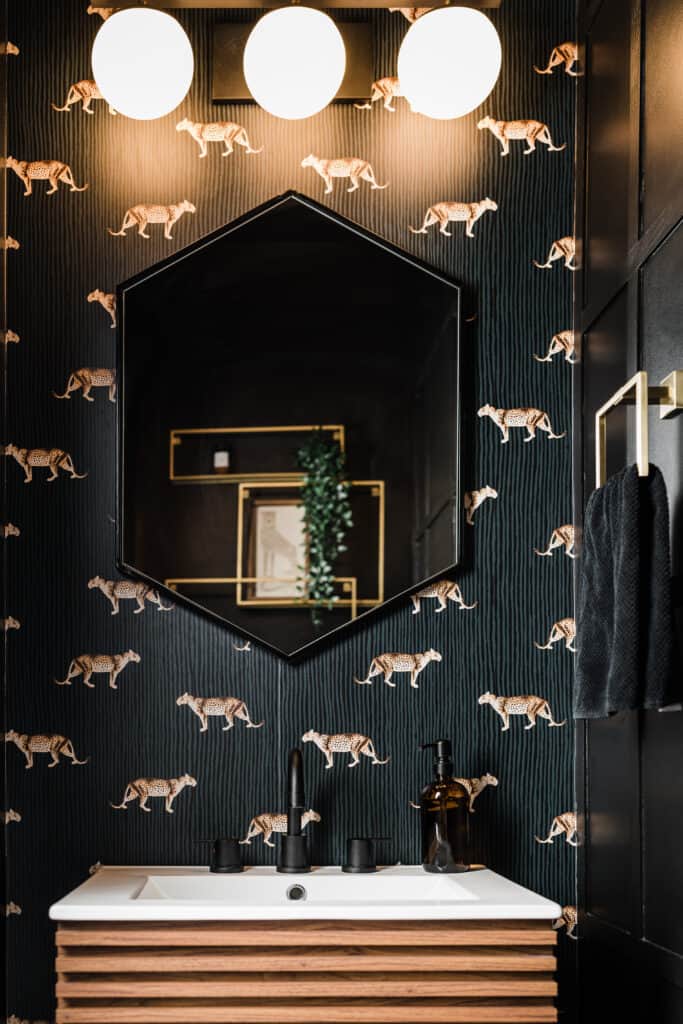
Disclaimer: This post contains affiliate links. This means, if you purchase something from a link I provided, I will receive a small commission. This is at no extra cost to you! Thank you for your support!
Traditional Wallpaper
Traditional wallpaper can also be referred to as non-pasted, or unpasted wallpaper.
Let’s think of this as the “OG” wallpaper that’s stood the test of time. Traditional wallpaper requires an adhesive for installation.
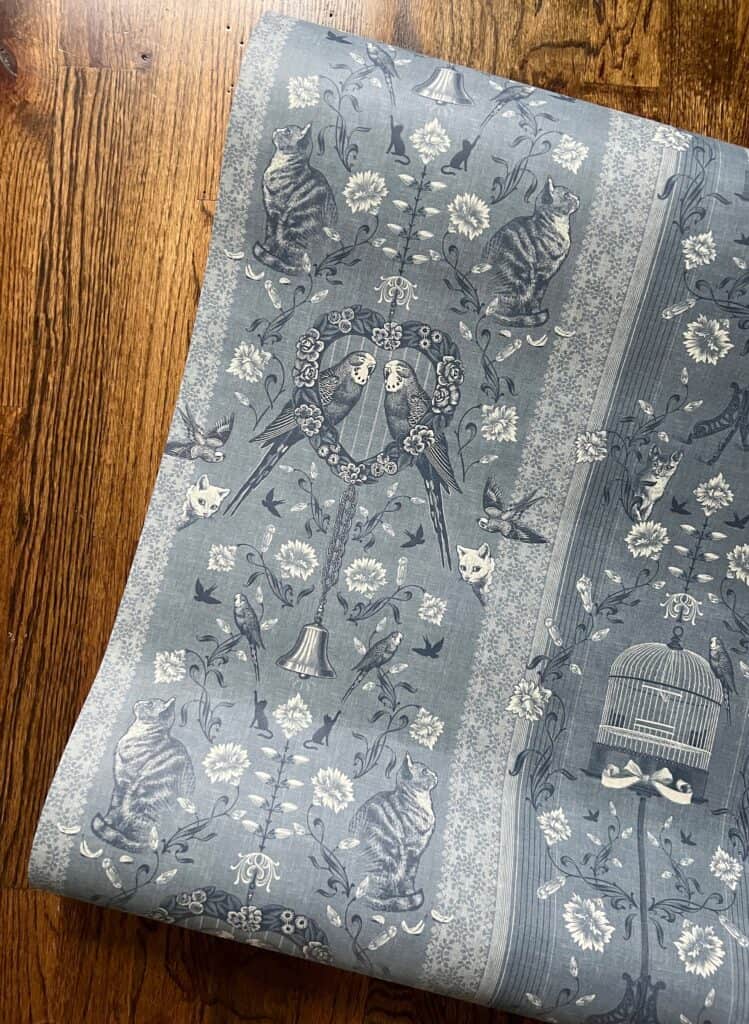
Pros of traditional wallpaper
- It’s made to last– A good quality wallpaper can last 15+ years
- There’s a wider selection to choose from– You can find pretty much any pattern of wallpaper in a non-pasted style
- The finish is beautiful– Traditional wallpaper generally looks more like paper where many peel and stick styles tend to have a glossier finish which some people may not like.
- It’s easier to position– Specifically in comparison to peel and stick wallpaper, it’s easier to get traditional wallpaper in the right position because you can shift it a little once it’s up on the wall.
Cons of traditional wallpaper
- It’s made to last– This is both a pro and a con because traditional wallpaper is notorious for being difficult to remove. The process of removing wallpaper can not only be a headache, but it can also cause damage to your walls. However, some newer wallpaper products can be removed more easily. Also, they make primers like this that are meant to make removal easy.
- It can be more expensive– This totally depends on the wallpaper you choose, as there are different quality levels, but luxury and specialty wallpaper can be very expensive. Another difference is that you have to purchase wallpaper adhesive. Lastly, if you want to hire a professional, it can cost on average of $45/hr for installation.
- Install can be tricky– Since adhesive is required, there is definitely a bit more skill involved. A lot of people are very intimidated by traditional wallpaper, but I have to mention it’s not as difficult as you might think!
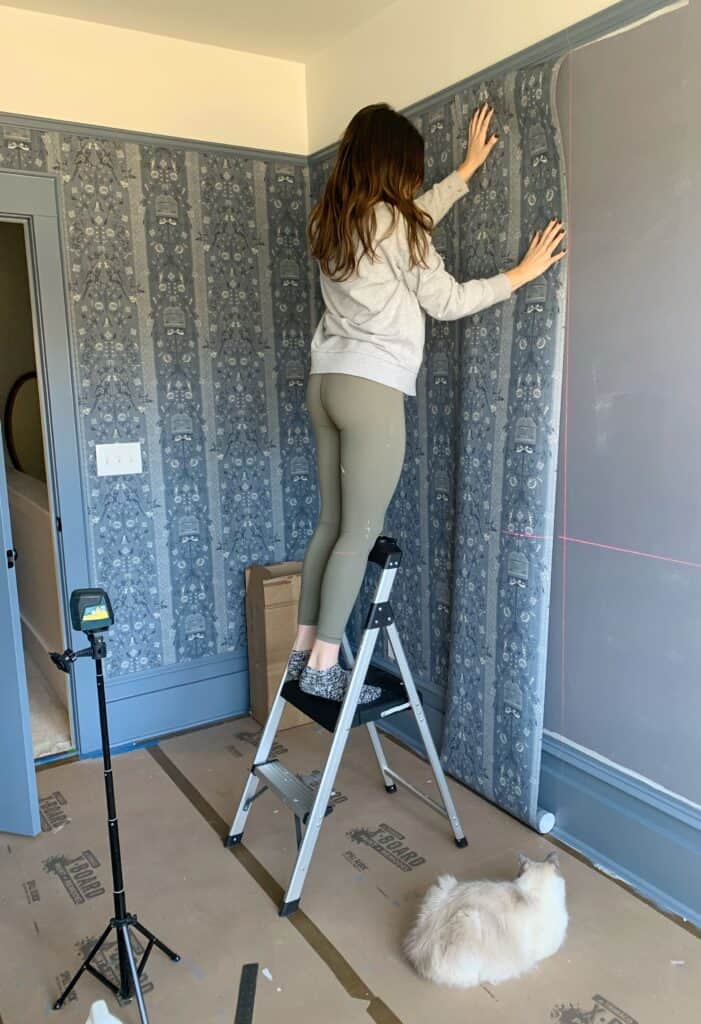
Peel and Stick Wallpaper
Peel and stick wallpaper is also referred to as self-adhesive, or removable, wallpaper.
This type of wallpaper is newer to the market and is definitely becoming a popular choice, especially for renters!

Pros of peel and stick wallpaper
- It’s removable– This makes peel and stick a great option for anyone looking to decorate a space temporarily. It’s perfect for an apartment, a college dorm, a nursery, or to try out a trend you’re not sure if you’ll want to fully commit to.
- It’s DIY friendly– Peel and stick wallpaper is essentially a huge sticker, so the process of installing it is quite simple and requires minimal tools or DIY experience. You simply peel off the backing and position it straight on your wall.
- It’s not messy!– For those that hate any kind of mess, this is the wallpaper for you! Since there is no adhesive required, the prep and clean up is a breeze.
Cons of peel and stick wallpaper
- It’s temporary– This can double as a pro and a con depending on what your goal is. If your goal is for the wallpaper to have a longer lifespan, you’ll want to stick with a traditional wallpaper. The adhesive quality is not nearly as strong as paste.
- It’s harder to install correctly– I get how this might be confusing since I mentioned that peel and stick is very DIY friendly. But due to the stickiness of the paper, you have to place it perfectly level otherwise you’ll need to completely peel it off and reposition. Those who have experience with both often say peel and stick is more difficult to install properly.
- Bubbles are harder to remove– Once the peel and stick is on the wall, it’s hard to get the bubbles out. With traditional or pre-pasted wallpaper, you can smooth out any bubbles once it’s up so long as the glue hasn’t dried.
- It’s usually more expensive– a good quality peel and stick wallpaper is usually more expensive than a traditional wallpaper
Pre-Pasted Wallpaper
Pre-pasted wallpaper can also be referred to as water activated wallpaper.
This is a variation to the traditional wallpaper. It has a water activated adhesive in the paper! Therefore, once water is applied, the back of the wallpaper becomes sticky.
Pre-pasted wallpaper usually involves a method called booking where you fold the water activated wallpaper onto itself and it thickens the adhesive, expands the wallpaper, and prevents it from drying out.
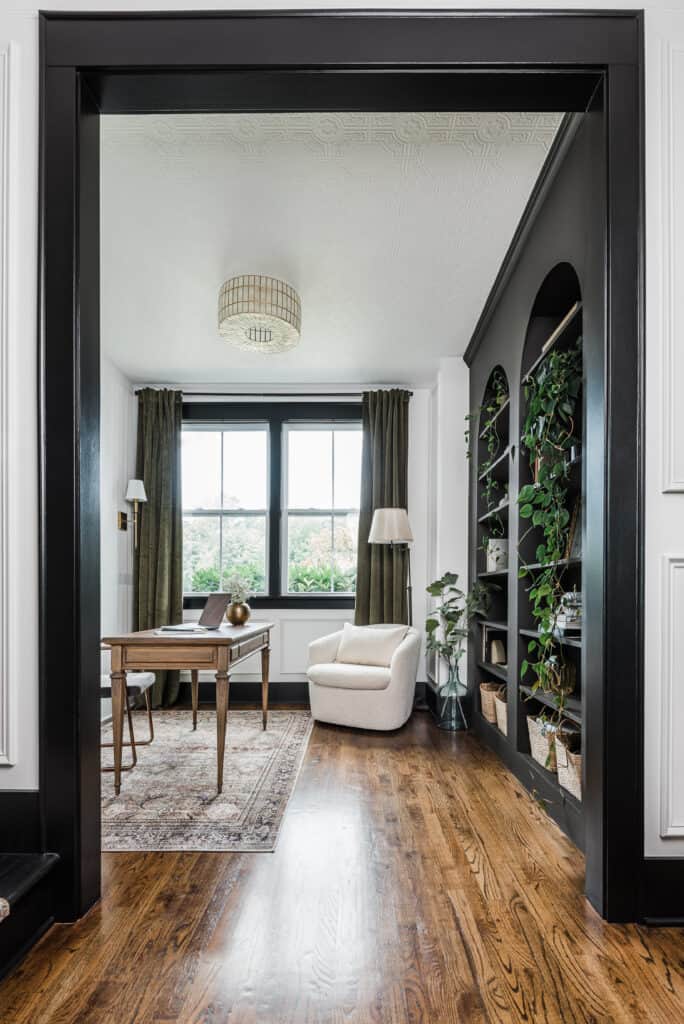
Pros to pre-pasted wallpaper
- No glue required– Since the adhesive is built into the wallpaper, you don’t need to buy glue! (Side note: the one time I used pre-pasted wallpaper, I was applying it to my ceiling, so I decided to use wallpaper glue in addition to be safe!)
- Installation is forgiving– Since there’s adhesive on the back, the wallpaper slides around easily and therefore it’s easier to adjust and line up the pattern.
- Usually less expensive– most pre-pasted wallpaper options are a little less expensive than a traditional or peel and stick option.
Cons to pre-pasted wallpaper
- It’s messy– Out of all 3 types of wallpaper, this one is the messiest. Since water is required to activate the adhesive, you’ll definitely need to protect your floors and surroundings with plastic tarp. A lot of pre-pasted options even say to dip your panel in a tub of water. That’s what the directions said for mine when I installed it. That method seemed incredibly messy to me, so I used a spray bottle and applied generously instead. It worked great!
- No control over the amount of paste– This goes hand in hand with the fact that this method is messy, but since the adhesive is water activated, you can’t control how much it produces. It might be oozing out from every seam…yikes!
- Doesn’t last as long as traditional– Pre-pasted adhesive won’t have the lifespan of traditional wallpaper.
Frequently Asked Questions
What’s the best type of wallpaper for a beginner?
I always recommend starting with a peel and stick wallpaper if it’s your first time wallpapering!
However, it should be in a very small space such as a closet, pantry, powder room, laundry room, etc. and only on on wall! Corners are tricky so I would avoid them for your first time if possible!
My first time wallpapering I used a peel and stick wallpaper on one wall in my powder room. It was perfect because I only had to install 2 panels and it gave me the confidence to tackle wallpaper again!
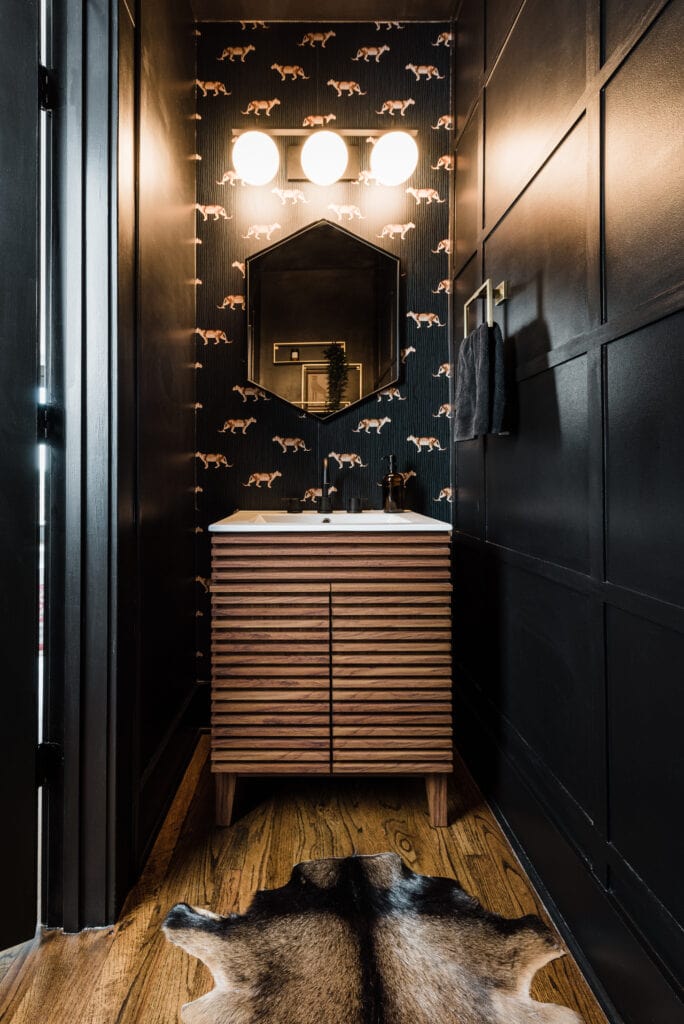
Out of the 3 types of wallpaper, which one is your favorite?
If I had to choose a favorite, it would be traditional wallpaper.
With that being said, the type of wallpaper I choose will depend on the project and the situation. Here’s a few examples of when I would choose a peel and stick wallpaper over a traditional or pre-pasted wallpaper:
- Using wallpaper in tiny areas like drawers or built-ins just to avoid the mess!
- In a nursery or a kid’s room where I know they will outgrow the look.
- In a room prone to moisture like a laundry room, mudroom, or bathroom because certain peel and stick wallpapers are moisture resistant
Can I wallpaper over textured walls?
The short answer is yes, you can.
But, there are different types of textured walls and different types of wallpaper, so you have to do your research and turn to the suggestions of the wallpaper manufacturer. Certain colors and patterns may not be the best choice for textured walls.
Ultimately, it will be easier and look better to wallpaper over a smooth wall, but you 100% can still do it! You also have the option to do a skim coat to make the wall smooth before installation.
Here’s a great article on what to do if you want to wallpaper over textured walls.
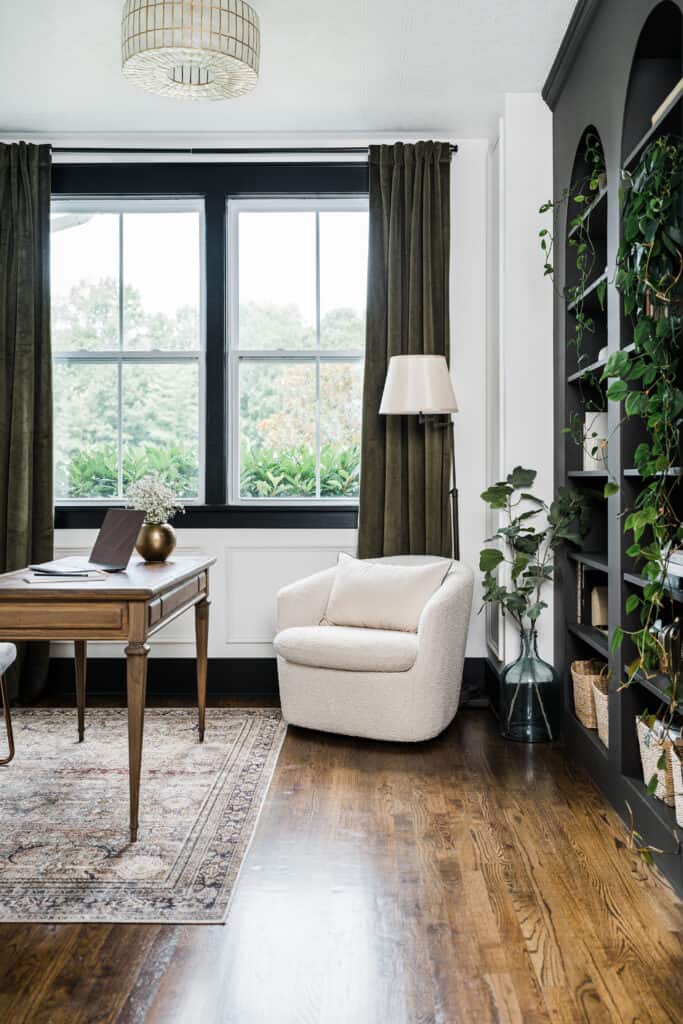
Hopefully now you have a better idea of the 3 types of wallpaper! As a reminder, they each have their pros and cons so just keep those in mind and choose the best option for you!!
If you enjoyed this post, you may also like my post on LVP vs. Engineered Hardwood: 5 Things to Consider or my post on How to Paint Trim and Why Satin is the Best Finish.
Elisha <3
Hi
Wonderful wallpaper. Very nice Idea. Good job work. I like.
Thank you SO much Raj!! Great to hear!
So helpful and informative! I am going to try stick on wallpaper in my powder room????????
So glad it was helpful! That’s such a perfect spot to try it out!! Good luck 🙂